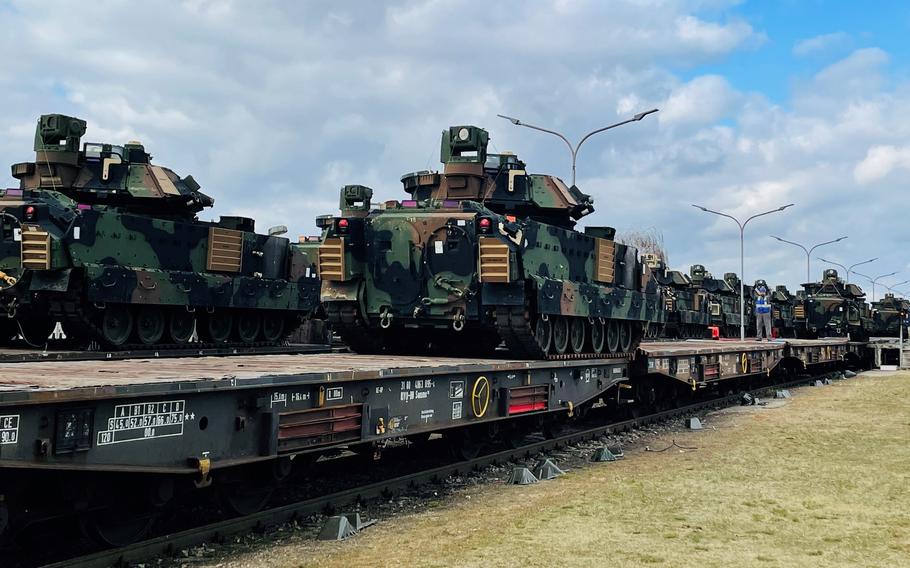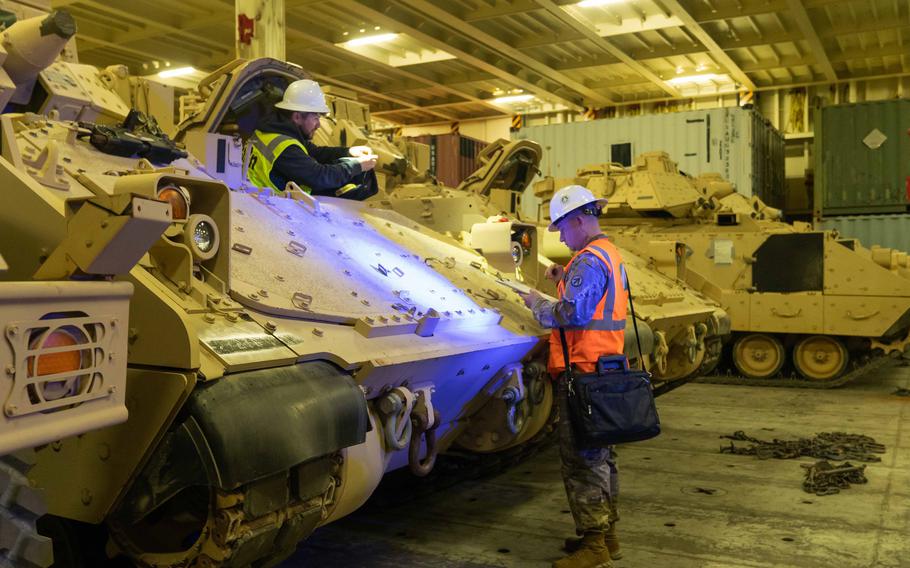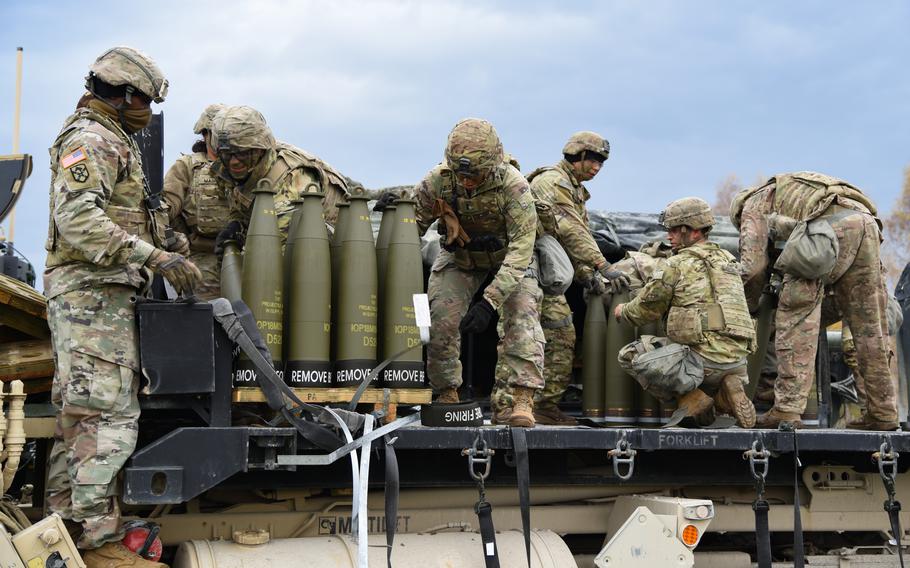
Dozens of Bradley Fighting Vehicles are loaded onto German rail cars in Mannheim, Germany, March 14, 2022. (Allan Laggui/U.S. Army)
Weapons and ammunition that U.S. soldiers are moving across Europe and transferring to Ukraine at a logistics site in Poland risk being lost or stolen because security measures aren’t being observed consistently, a Pentagon investigation has found.
In one lapse, a batch of Bradley Fighting Vehicles with machine guns inside was mistakenly left unguarded at the site, according to a Defense Department Inspector General report.
The watchdog agency’s previously classified findings were released publicly on Monday.
American service members transport all of it to depots on NATO’s eastern flank, where it’s transferred to Ukrainian trucks and trains.

Army Sgt. Ryan Townsend helps prepare a Bradley Fighting Vehicle for overseas transport in North Charleston, S.C., Jan. 25, 2023. More than 60 Bradleys were shipped by U.S. Transportation Command as part of the American military aid package to Ukraine. (Oz Suguitan/U.S. Transportation Command)
The IG investigation focused solely on military aid being handed over at a major Polish logistics hub before it is moved by rail into Ukraine. The location’s name was redacted in the report.
But it also warned that personnel are not consistently adhering to security controls, which exist partly to prevent arms, ammunition and explosives from getting into the hands of criminals and terrorist groups.
The other was a transfer of 14 M2A2 Bradleys, 12 howitzers and seven M992 ammunition carriers from commercial line haul trucks, according to the report.

U.S. soldiers unload M777A2 Howitzer ammunition bound for Ukraine at the 7th Army Training Command’s Grafenwoehr Training Area, Germany, in November. (Markus Rauchenberger/U.S. Army)
The noncommissioned officer in charge of the truck convoy was unaware that machine guns were being transported in the Bradleys, the report said.
The officer told investigators that the team had not verified the cargo before departing from an installation in Mannheim, Germany, and therefore could not account for the weapons by serial number, which is required by protocol.
Military guards who arrived with some of the Bradleys at the railyard remained with the equipment overnight but returned to their home station the following morning, “leaving no armed guards to maintain surveillance and checks on these vehicles containing weapons,” which is also against protocol, the investigators found.
Two Polish police officers in a van were seen patrolling the site as part of the railyard’s normal security, and nothing was reported missing, according to the report.
But in June, several boxes of ammunition were stolen from a train without the guard force’s knowledge. Although that incident was outside the scope of the inspector general’s investigation, it nevertheless illustrates the vulnerability of sensitive weapons and ammunition to theft, the report said.
Meanwhile on Tuesday, the DOD Inspector General announced the arrival of a senior official at the U.S. Embassy in Kyiv and said more staffers will soon be sent to monitor U.S. security assistance to Ukraine.
It marks the first time the watchdog agency will have personnel based in the county since Russia’s full-scale invasion.

A U.S. soldier from the 3rd Armored Brigade Combat team, 1st Cavalry Division participates in railhead operations in Poland on July 26, 2022. (David Dumas/U.S. Army)